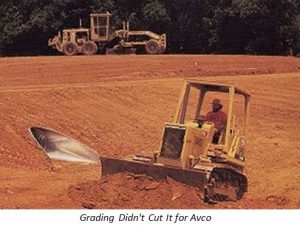 In a 5-4 ruling today, written by Chief Justice Roberts, the United States Supreme Court overturned a 1985 decision which had made claims for the taking of private property far more difficult to pursue in federal court. In many ways, today’s ruling in Rose Mary Knick v. Township of Scott, Pennsylvania, 588 U. S. ____ (2019), represents a significant “back to the future” moment that should benefit landowners. Continue reading
In a 5-4 ruling today, written by Chief Justice Roberts, the United States Supreme Court overturned a 1985 decision which had made claims for the taking of private property far more difficult to pursue in federal court. In many ways, today’s ruling in Rose Mary Knick v. Township of Scott, Pennsylvania, 588 U. S. ____ (2019), represents a significant “back to the future” moment that should benefit landowners. Continue reading
Articles Posted in Property Rights
Avco at 40: What it Really Said About Vested Rights In California
Forty years after the California Supreme Court addressed vested rights in its oft-quoted “Avco” decision, a simple two-part question often is asked to determine whether, in the face of changes to land use regulations, the right to complete a project has vested: “Has a building permit been issued and has a foundation been poured?” Sometimes, the question is framed “Are there sticks in the air?” There are, however, circumstances where vesting may occur without sticks in the air, the pouring of a foundation, or even the issuance of a building permit. One of those arises under what Avco Community Developers v. South Coast Regional Commission called “rare situations.” Another is where a local ordinance provides its own vesting standards.
 The Decision. Avco arose from the 1972 adoption by California’s voters of the Coastal Zone Conservation Act (the “Act”), the precursor to California’s Coastal Act. The County of Orange had approved a final tract map and issued a grading permit for a planned community. The developer began grading, installed subdivision improvements, and incurred substantial liabilities in reliance on the County approvals – all before the effective date of the Act. In the end, the Court concluded that the developer needed a permit from the newly-created Coastal Zone Conservation Commission because building permits for individual structures had not been issued before the Act became effective. This has led to a common, though incorrect, perception that Avco held that in all cases a building permit – and more – is needed to vest a project against changing land use regulations.
The Decision. Avco arose from the 1972 adoption by California’s voters of the Coastal Zone Conservation Act (the “Act”), the precursor to California’s Coastal Act. The County of Orange had approved a final tract map and issued a grading permit for a planned community. The developer began grading, installed subdivision improvements, and incurred substantial liabilities in reliance on the County approvals – all before the effective date of the Act. In the end, the Court concluded that the developer needed a permit from the newly-created Coastal Zone Conservation Commission because building permits for individual structures had not been issued before the Act became effective. This has led to a common, though incorrect, perception that Avco held that in all cases a building permit – and more – is needed to vest a project against changing land use regulations.
The words most often associated with Avco are “if a property owner has performed substantial work and incurred substantial liabilities in good faith reliance upon a permit issued by the government, he acquires a vested right to complete construction in accordance with the terms of the permit.” Those words, however, did not foreclose a less rigid vesting analysis. The Court also stated that its decision was “not founded upon an obdurate adherence to archaic concepts inappropriate in the context of modern development practices or upon a blind insistence on an instrument entitled ‘building permit’.” The Court even commended the Commission for conceding that a building permit is not “an absolute requirement under all circumstances for acquisition of a vested right” before noting that there may be “rare situations” where vesting is based upon a different type of approval, one that provides “substantially the same specificity and definition to a project as a building permit.” This crack in the Avco door can lead to an alternative path for acquiring vested rights to shield an approved project from new regulations.
The “Rare Situation.” Not long after Avco, a “rare situation” emerged from the application of changed land use regulations to another Orange County planned development. In San Clemente Estates v. City of San Clemente, a federal bankruptcy judge addressed the vesting of a development for which grading permits had not been issued and building permits applications had not been filed at the time the new laws were adopted. The court concurred with the holding in Avco, but seized upon Avco’s “rare situations” discussion. The court found that the City Council was “intimately familiar with the project,” including details regarding the location, elevation, and appearance of each lot, the type of single family home to be built on each lot, and the specific locations of condominiums, a club house, and an equestrian center. As a result, the court concluded that the City Council knew “exactly what it was approving” and found that the project was insulated from the City’s newly-adopted land use regulations.
Local Ordinances. The Avco Court also noted that Orange County’s Building Code prohibited issuance of a building permit unless it conforms to “other pertinent laws and ordinances.” The Court saw that language as reflecting “the general rule that a builder must comply with the laws which are in effect at the time a building permit is issued, including the laws which were enacted after application for the permit.”
 But what if local ordinances, as sometimes is the case, expressly counter that “general rule” by providing that a developer has the right to complete a project pursuant to planning and zoning regulations in effect when an application is deemed complete? It is difficult to foresee any situation in which Avco would override the express vesting provisions of local ordinances, such as the example to the right from the City of Dana Point. Therefore, rather than meekly conceding to a rigid application of Avco, it is necessary to evaluate vested rights in the context of sometimes obscure local ordinances which might operate in the developer’s favor.
But what if local ordinances, as sometimes is the case, expressly counter that “general rule” by providing that a developer has the right to complete a project pursuant to planning and zoning regulations in effect when an application is deemed complete? It is difficult to foresee any situation in which Avco would override the express vesting provisions of local ordinances, such as the example to the right from the City of Dana Point. Therefore, rather than meekly conceding to a rigid application of Avco, it is necessary to evaluate vested rights in the context of sometimes obscure local ordinances which might operate in the developer’s favor.
Without a doubt, Avco is alive and well at age forty. It continues to strongly suppress the vesting of development rights in California. Indeed, there have been harsh applications of Avco which have denied vesting to projects that arguably could have been “rare situation” exceptions. While, in virtually all cases, development agreements will remain the best protection against new land use regulations, developers should be aware that “rare situations” and local ordinances do exist which may present project-saving opportunities. Those opportunities should not be overlooked simply because foundations have not been poured and sticks are not in the air.
How Will Justice Scalia’s Passing Impact Land Use?
There likely is not a developer, city planner, or local elected official whose vocabulary does not include the word “nexus” when discussing the limitations on a public agency’s ability to exact concessions from developers. You can thank the late Supreme Court Justice Antonin Scalia for that. With the passing of Justice Scalia, there is lively dialogue over his successor’s potential influence on high profile issues such as abortion, gun control, and gay marriage. Lost in that discussion is the potential for the next Justice to profoundly influence the Court’s land use and property rights decisions. Here’s a quick look at Justice Scalia’s influence on the Court’s land use and property rights decisions over the past three decades.
Nine months after he was confirmed by the Senate on a 98-0 vote, Justice Scalia wrote the Court’s majority opinion in Nollan v California Coastal Commission, one of the most significant land use decisions of the last century. For those of us actively representing landowners in California’s coastal zone at the time, our immediate reaction was that an overly zealous Coastal Commission had been chastised. But Nollan meant much more than that. In Nollan, the Coastal Commission had imposed a condition upon the demolition and replacement of a dilapidated beach bungalow requiring that a deed restriction be recorded to grant access to the public across a portion of the property. The alleged reason for this condition was that the construction would limit “visual access” to the beach, thus creating a “psychological barrier” to physical access.
Justice Scalia wrote that “[i]t is quite impossible to understand how a requirement that people already on the public beaches be able to walk across the Nollans’ property reduces any obstacles to viewing the beach created by the new house.” Thus, the “essential nexus” between the reason for the condition and the very nature of the condition was lacking, resulting in a victory not only for the Nollans, but for California landowners for decades to come. As noted by Justice Scalia in the opinion, the Nollan decision was “consistent with the approach taken by every other court that has considered the question, with the exception of the California state courts.”
Just How Binding Is that Illegal, Immoral AND Un-American Condition on Your Project?
Your land use approval contains a condition – say, the sacrifice of your first born child prior to the issuance of the 50th certificate of occupancy – mandated by a local ordinance which is successfully challenged by someone else a year or two after you start building but before you seek the 50th certificate. Can you get the condition set aside?
Unfortunately, the answer is no. You’re bound by it because you failed to challenge it yourself in a timely manner.
Every developer is aware that the time in which to challenge an undesirable condition imposed on a land use approval is short – typically 90 days. What most developers are not aware of is that a failure to challenge a condition within the time allowed prohibits a later challenge even if it later becomes clear that the condition violated the law at the moment it was imposed.
This was recently highlighted in a case which involved an inclusionary housing condition imposed on a use permit for an apartment building with retail space on the ground floor in the City of Berkeley. Five years later, a different developer involved in a different project in a county far, far away, successfully challenged a similar condition as being illegal on the grounds that it had been preempted by a state law which prohibited precisely that kind of condition. The second developer was successful because it had filed its lawsuit within 90 days of the issuance of the permit which allowed it to build its apartment project. Continue reading
The Sky’s the Limit – Sometimes
You probably haven’t spent much time wondering about who owns that sky above your house? You may be surprised to find out that, according to Public Utilities Code Section 21402, that sky is yours – to a point. So, what is this curious asset worth and, more to the point, what can you do with it? Scott and Lynn Powell, Humboldt County homeowners, found the answer the hard way.
The Powells wanted to make minor alterations to their home. “Fine” said the County, as long as the Powells provided an aircraft overflight easement as required by the County’s General Plan. The Powells, willing to assume the role of David to the County’s Goliath, filed suit, arguing that this requirement was not substantially related to the modification of their home and, in fact, resulted in a taking of their property. Under the Constitutions of the United States and California, the Powells filed an action for just compensation from the County. Goliath won. Continue reading
 Lay of the Land
Lay of the Land


